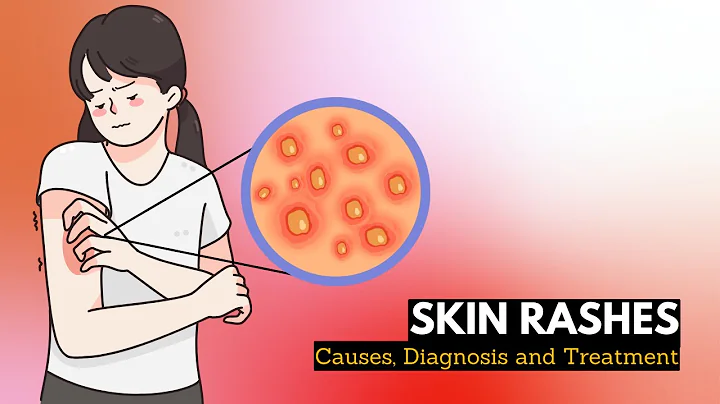Some itching and itching that was inconspicuous at the beginning turned into a serious illness without any expectation, and it was delayed and could not be cured. Skin diseases may seem like a "little thing", but they are extremely "vital". Another major difficulty in the diagnosis and treatment of skin diseases is that it is difficult to diagnose, because some skin diseases are "imitation masters"! In order to get treatment, some patients went to multiple hospitals but could not get a diagnosis, let alone treatment, and suffered physical and mental torture.
Dermatopathologists, like " Sherlock Holmes ", peeled away in layers of fog until they discovered the truth of the disease. The reporter recently interviewed Sun Jianfang, former director of the Department of Dermatology at the Institute of Dermatology, Chinese Academy of Medical Sciences and Distinguished Professor of Dermatology at the Second Affiliated Hospital of Nanjing Medical University, and asked him to reveal the "imitation masters" of several types of skin diseases. mask".
A biography of a famous person
Sun Jianfang
Second-level professor and doctoral supervisor. Former director of the Department of Dermatology, Institute of Dermatology, Chinese Academy of Medical Sciences. expert who enjoys special government allowance from the State Council; one of the first batch of national-level candidates for the "New Century Hundreds and Thousands of Talents Project". Head of the dermatopathology group of the Chinese Medical Doctor Association, the Chinese Medical Association, and the Chinese Society of Integrated Traditional Chinese and Western Medicine; executive member of the Asian Society of Dermatopathology, and deputy director of the Dermatology Branch of the Chinese Society of Integrated Traditional Chinese and Western Medicine.

Mycosis fungoides -
What you thought was eczema , but a few years later it "became" lymphoma
The most famous "imitator" in skin diseases is "mycosis fungoides".
Mycosis fungoides belongs to primary cutaneous T-cell lymphoma . This name may be unfamiliar to many people. It is a relatively rare skin disease. The disease manifests as various forms of erythema and infiltrative lesions in the early stage, and later develops into tumors. In the late stage, it may involve lymph nodes, and internal organs.
The typical course of mycosis fungoides is a chronic and progressive process, starting from the erythema stage, entering the plaque stage, and finally developing into the tumor stage, which lasts for several years to decades. If treatment measures are taken at the early stage of the disease, it will help the condition improve. However, the disease is often misdiagnosed in its early stages.
The early symptoms of this disease are very similar to dermatitis and eczema-like skin diseases. After a period of treatment, the symptoms will not improve significantly, or the patient may feel better. Then the disease enters the infiltrative stage, infiltrative plaques appear, dark red irregular bulges appear on the skin, atrophy and itching of the skin cannot be controlled by commonly used anti-itching drugs, dry peeling and abnormal pigmentation may also occur. If not treated correctly at this time, tumors will gradually appear on the basis of infiltrated plaques, manifesting as mushroom-like lesions that bulge to the surface or nodular masses that grow subcutaneously. After the occurrence of tumors, lymph node enlargement is seen. At this time, there are often lesions in internal organs. Almost all internal organs can be affected.
There are many subtypes of mycosis fungoides, which look very similar to many diseases, and it is difficult for doctors in some primary hospitals to judge - if erythema appears, it will be mistaken for eczema, atopic dermatitis ; vitiligo will be mistaken for pityriasis alba which is a piece of cake, or vitiligo ; when patches of various colors appear, it will be regarded as pityriasis versicolor ; it can also cause leprosy, syphilis and other symptoms of disease. The diagnosis of this disease is mainly based on clinical characteristics and histological indications. Early diagnosis generally requires pathological examination.
Syphilis -
is not only targeting your "private zone"
Another "imitation master" in the field of dermatology is more famous, it is syphilis. Experts say that syphilis is a chronic, systemic sexually transmitted disease caused by Treponema pallidum. Syphilis is also a super "pretender". The symptoms resemble various skin diseases, and the early symptoms disappear quickly, giving the illusion of self-healing. In fact, it grows latent for a long time and is difficult to detect. Many people think that syphilis appears in "private areas". In fact, syphilis rash can have various manifestations. Syphilis is easily missed and misdiagnosed clinically.Some patients will experience peeling of the palms and soles of their feet, which may be misdiagnosed as allergic diseases; some patients may experience erythema and scaling on their knees, limbs, etc., which may be misdiagnosed as psoriasis, pityriasis rosea and other diseases.
In fact, when a patient is first infected by Treponema pallidum, he or she only develops a round or oval ulcer in the genital area. It feels a little hard, and the ulcer surface is flat and clean, with no obvious pain or tenderness. This is the legendary sign of syphilis. Signature feature - hard chancre. In the secondary stage of syphilis, Treponema pallidum begins to "attack the city" along the lymph and blood. Red spots begin to appear on the patient's body, especially on the palms and soles of the feet. There are small papules and connected spots. "Plum blossoms" are all over the arms and legs. , face and even mouth. The "brutal" nature of tertiary syphilis will cause the body's organs and tissues to collapse because of it.
aids is also a "master of imitation". The early stage of AIDS also manifests as infection, fever, herpes simplex, genital herpes , etc. on the skin. Therefore, in the early stages of AIDS, people often mistakenly thought it was a skin disease.
Leprosy -
The clinical manifestations are diverse, and the rash is neither painful nor itchy
There is also leprosy, which is an ancient chronic infectious disease caused by Mycobacterium leprae infection. It mainly invades the skin, mucous membranes and peripheral nerves, has the characteristics of insidious early symptoms, long incubation period, and can easily lead to deformity and disability. Because the clinical manifestations of leprosy are diverse, it can "imitate" the rashes of many common skin diseases; in addition, in many cases, the rash of leprosy is neither painful nor itchy, or is accompanied by abnormal sensation , such as localized ant feeling, Numbness, no sweating, and no pain can easily cause patients to ignore the development of the disease, and are often misdiagnosed and delayed in treatment.
Many people think that leprosy is far away from us, but it is not. Leprosy infection is silent. Some patients develop particularly large erythema, hair loss, , etc., and are misdiagnosed as alopecia areata, , etc., androgen alopecia, etc.; some patients also experience persistent fever, etc., and are diagnosed For infectious diseases, even tumors, etc.
The skin is "abnormally itchy". It may be that the body is "crying for help"
Everyone must have itchy skin. Because it often occurs, many friends do not take it seriously and think it is a natural reaction of the skin. But in fact, sometimes the skin is itchy. , it is very likely that it is a distress signal sent by the body.

Experts pointed out that first of all, itchy skin may be caused by a simple skin disease. Especially in summer, the incidence of eczema is very high, which may also cause itching. In addition, skin diseases such as psoriasis, urticaria , etc. can cause skin itching. But one thing is very special. Although skin diseases can cause itching, there are abnormal symptoms on the skin surface, which is very easy to judge. If there are no symptoms on the skin surface but itching still occurs, you need to be alert to the following diseases:
1, liver and gallbladder abnormalities. As the saying goes, "Be honest and sincere", even if you are sick, there may be a connection. For example, patients with primary biliary cirrhosis will experience skin itching, and a relatively large number of people experience this clinically.
2, uremic . One of the clinical symptoms of uremia patients is abnormal itching of the skin. Because uremia destroys the kidneys and affects the metabolic function of the kidneys, the metabolic waste in the body cannot be removed in time, and thus deposits in the skin, and itching occurs. In addition, uremia can also cause peripheral nerve lesions, causing itching.
3, diabetes . Diabetes itself is a metabolic disease, and most people with diabetes have abnormal skin itching. This is because diabetes will continue to cause damage to nerves and blood vessels, irritating the capillaries on the skin surface, leading to skin surface lesions, and itching is a major symptom.
4. Cells in the body "rebellion". If visceral cells become cancerous, leading to cancerous tumors, it may also cause skin itching.Because tumors produce histamine and biologically active substances, these substances may reach the surface of the skin with the blood and cause irritation to the sensory nerve endings, thereby causing skin itching.
Related News
These difficult-to-treat skin diseases cannot escape his "fiery eyes"
Professor Sun Jianfang is good at the diagnosis and treatment of difficult, rare and complex skin diseases, especially skin pathology and skin tumors. Professor Sun Jianfang not only accurately diagnoses difficult skin diseases such as mycosis fungoides, but also provides effective treatment plans to save patients from the pain of surgery. This kind of skin disease that is good at camouflaging can be cured or improved through medication.
In order to further promote the development of the Dermatology Department of the Second Affiliated Hospital of Nanjing Medical University and improve the technical level and service capabilities of dermatology and STD diagnosis and treatment, the Dermatology Department of the Second Affiliated Hospital of Nanjing Medical University invited well-known domestic experts and authorities in the field of dermatology and STDs. Expert Sun Jianfang came to the hospital as a distinguished professor to carry out clinical teaching and research activities.
In order to facilitate patients' medical treatment, Professor Sun Jianfang opens a senior expert clinic every Thursday morning at the special diagnosis and treatment center in the Sajiawan Campus of the Second Affiliated Hospital.
Yangzi Evening News/Ziniu News reporter Yu Dandan
Proofreading Faye Wong





















